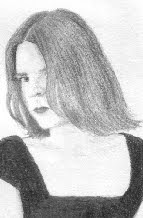 All that Ren remembers of life is St Anthony’s Orphanage. He has no idea who his parents were, why he was abandoned, or how he lost his hand. What he does know is that if he’s not adopted soon, the monks of St Anthony’s will sign him over to the army.
All that Ren remembers of life is St Anthony’s Orphanage. He has no idea who his parents were, why he was abandoned, or how he lost his hand. What he does know is that if he’s not adopted soon, the monks of St Anthony’s will sign him over to the army.
Ren’s dreams of a family look set to be realised when the dashing Benjamin Nab claims him as his long-lost brother. In fact Benjamin is a conman and thief who sees in Ren’s missing hand a fine opportunity to generate sympathy and profit. Yet even his acuity doesn’t see how good a choice Ren is, for he filled the emptiness of orphanage life with the products of habitual petty theft. With his light-fingered talents he adapts to life with Benjamin and his alcoholic accomplice Tom, but is never happy with the idea of being a criminal. When Benjamin - against his better judgement - moves the little group to the town of North Umbrage, Ren discovers just how far his “brother” will go for some easy money. He also finds that there are powerful enemies lurking in the shadows, and friends for whom such danger is worth risking.
I really need to start keeping better track of where I hear of books I want to read; I have no idea where I got the notion that this was worth borrowing. Newspaper, I think. Whoever it was, they were right; I enjoyed it, and liked the titular thief - Ren - from the beginning. It was easy to understand why he would take to theft; and why, having seen what army life had done to another orphan, a life of crime would seem preferable. He cares about the people around him and wants to do the right thing as much as that’s possible; and he’s clever enough to do so while dodging the bad guys. Well, the worse guys ... since Benjamin and Tom aren’t exactly good. Yet they were made somehow sympathetic and hard to dislike. I joined Ren in envying Benjamin’s quick tongue and marvelling at his outrageous impromptu stories. Even Dolly the giant killer-for-hire had his good points.
As much as I was fond of Dolly, his advent marked the start of the flaws. The scientific side of my brain immediate began speculating as to whether he could have survived long enough to be found, and concluded that he couldn’t. And then there was the rooftop-dwelling dwarf, the mad mousetrap-factory owner, the gang of goons who each wore a different style of hat ... they introduced an element of the absurd (or of magical realism without the magic) that hadn’t been present before, making the second half of the book sit at odds with the first. I suddenly began to doubt whether it was meant to depict the “real” world at all. And the phonetic representation of McGinty’s accent was painful to read and as over-the-top as the man himself.
The ending made up for it all, though. I loved Benjamin’s last con, and seeing how the household - dwarf and all - took to their newfound life together. And I’ve added Hannah Tinti’s short stories to my must-read list.
Rating: B

















I think I got this one from Amazon for the Vine program some months ago. I can see it on my bookshelf now :-) I enjoyed the story, and the more mystical bent to it, but I agree there were parts that didn't quite fit. And I'm right there with you- I really enjoyed the ending :-)
ReplyDeleteI'm glad you liked it! I agree with you that there were some flaws in the book, but it didn't stop me from enjoying it. Probably won't reread though...it's that sort of book. :)
ReplyDelete